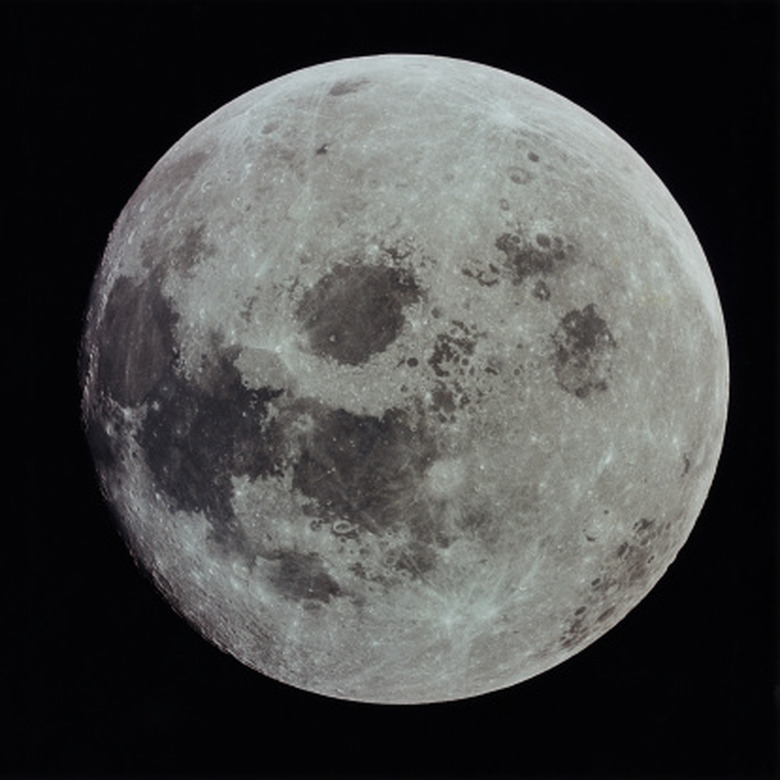Patterns Of The Moon
Like all orbiting bodies, the moon presents several different patterns. These patterns sometimes are complicated by the fact that the moon revolves around the Earth while at the same time the Earth revolves around the sun. In the past, farmers used the moon as their guide for planting, and in ancient times, the calendar was based on the lunar cycles.
Phases of the Moon
Phases of the Moon
The most obvious patterns of the moon are the phases of the moon, which move in a month-long cycle. Because the moon reflects its light from the sun, only the part of the moon that faces the sun is visible. As the moon revolves around the Earth, its shadow covers part of its surface. The full moon is when the entire moon is visible. A quarter way through the cycle, half of the moon is visible, known as the first quarter. Half way through the month, the moon seems to disappear, which is known as a new moon. Another quarter way through the cycle, the other half of the moon is visible; this is known as the third quarter.
Harvest Moon and Blue Moon
Harvest Moon and Blue Moon
In the past, farmers used the moon to tell them when to plant crops and harvest them. Each month had a name for the moon, based on what should be done. For example, the full moon in October was called a harvest moon, which is when farmers needed to harvest crops before winter. Another common moon expression is a blue moon, which is an expression to mean something rare. Normally, the four seasons have three full moons each, known as early, middle and late. However, sometimes a season has four full moons. When this happened, the third full moon of the season was called the blue moon, so the last moon could still be called the late moon.
Eclipses
Eclipses
Periodically, as the moon revolves around the Earth, it passes through the Earth's shadow. Because all or part of the sunlight that normally illuminates the moon is obstructed during this time, the moon experiences an eclipse. During a lunar eclipse, the visible portion of the moon appears light red. The moon can also move between the Earth and the sun, which produces a solar eclipse. A solar eclipse tends to be more dramatic because the moon partially obscures the sun in the middle of the day.
Tides
Tides
As the moon revolves around the Earth, its gravity pulls on the oceans. This causes the oceans to swell slightly and the sea level to rise when aligned with the moon. As the moon moves around the Earth, the tides rise and fall. High tide and low tide do not happen at the same time every day or at the same time around the world because they are determined by the movement of the moon, not the rise and fall of the sun.
Image Patterns
Image Patterns
In addition to patterns caused by the moon, there are patterns within the moon itself. Because the moon has no atmosphere, it is covered with craters and debris that has fallen from space for millions of years. These craters sometimes form images in the moon's surface. The most common image is the man in the moon, which features two impact craters that look like eyes connected to one that looks like a mouth. There is also a woman in the moon, which is a humanlike figure connected to one of the man's eyes. Other images in the moon's surface include craters in the shape of a rabbit.
Cite This Article
MLA
Carr, Kevin. "Patterns Of The Moon" sciencing.com, https://www.sciencing.com/patterns-moon-8509182/. 24 April 2017.
APA
Carr, Kevin. (2017, April 24). Patterns Of The Moon. sciencing.com. Retrieved from https://www.sciencing.com/patterns-moon-8509182/
Chicago
Carr, Kevin. Patterns Of The Moon last modified March 24, 2022. https://www.sciencing.com/patterns-moon-8509182/
